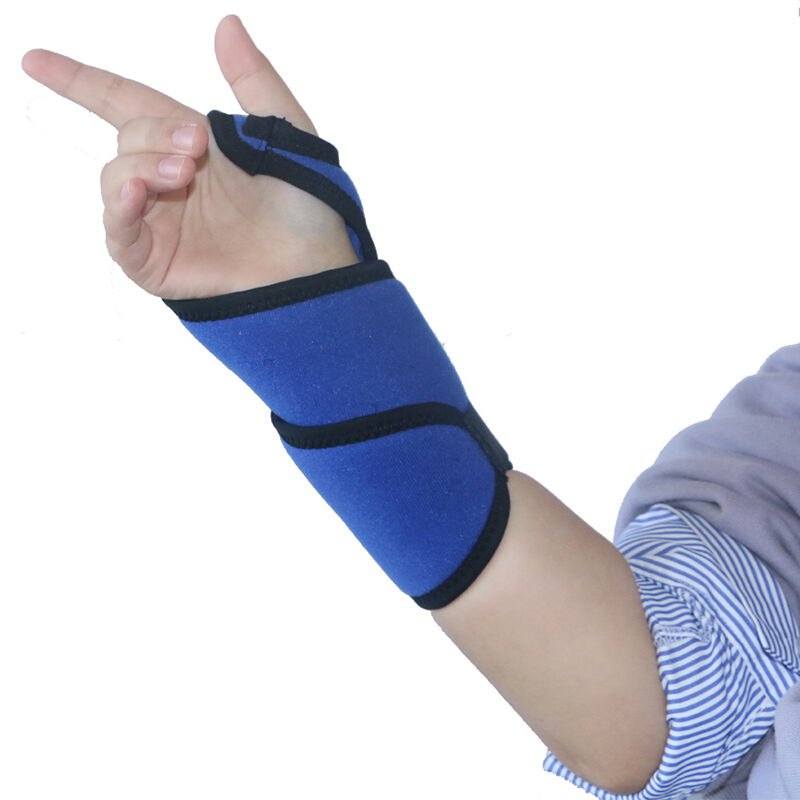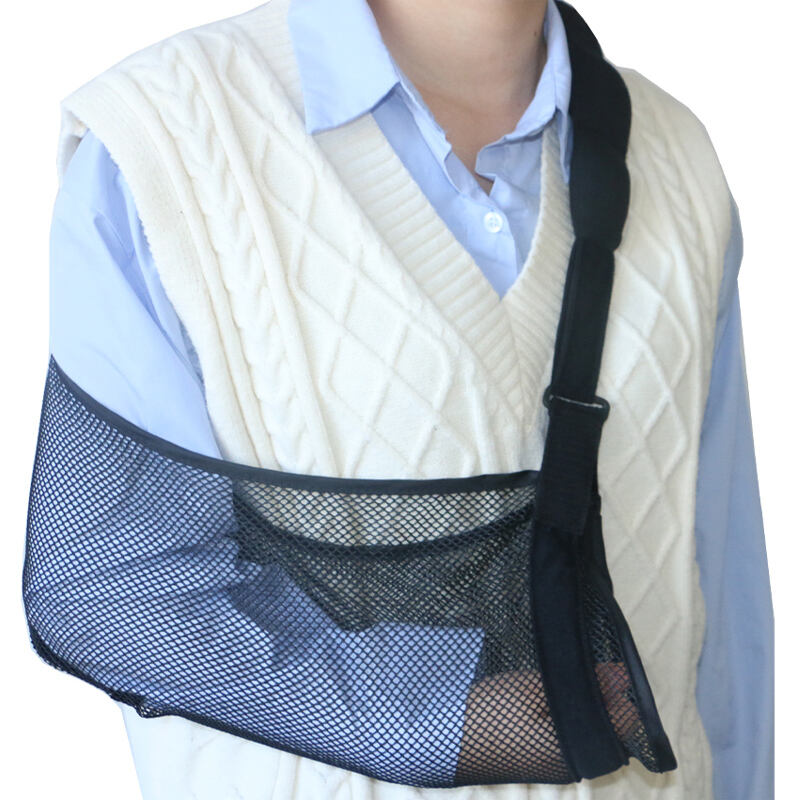Enhancing Mobility with Patient Lift Slings
Understanding Patient Lift Slings for Enhanced Mobility
What Are Patient Lift Slings?
Patient lift slings are specialized aids designed to safely transfer individuals with mobility issues from one location to another. These slings operate hand-in-hand with hoist systems, such as those found in hospitals, nursing homes, and home care settings, to provide mechanical support during patient transfers. The materials used in these slings significantly impact their usability and comfort for both patients and caregivers. Common materials include cotton, polyester, and nylon. Cotton is soft and breathable but less durable, making it suitable for disposable or short-term use. Polyester and nylon are more durable, often resistant to stretching and fraying, and provide a balance of strength and comfort, making them ideal for frequent, long-term use.
Benefits of Using Medical Transfer Slings
The primary benefits of using medical transfer slings are their ability to alleviate physical strain on caregivers and enhance patient mobility and independence, which leads to a better quality of life. In healthcare settings, slings have been shown to significantly reduce the risk of workplace injuries related to manual handling tasks, safeguarding caregivers' health. For patients, slings promote increased mobility by enabling safer and more comfortable transfers, reducing the likelihood of falls and accidents. Research in geriatric healthcare has indicated a direct correlation between the use of slings and enhanced safety during transfers, underscoring their importance in minimizing incidents of falls. These factors collectively improve the overall quality of care provided to patients, fostering a safer and more supportive environment for both patients and caregivers.
Types of Patient Lift Slings for Specific Needs
Transfer Slings for Safe Patient Repositioning
Transfer slings are an essential component in the healthcare environment, specifically designed to reposition patients safely in beds or chairs. These slings are integral to non-invasive care, providing a secure means to adjust a patient’s position without the need for manual lifting, thereby minimizing the physical strain on caregivers. Available in various designs, transfer slings may include added head support or extra padding to enhance comfort during repositioning. Studies indicate that the use of such slings significantly reduces the development of bed sores and other complications, as they facilitate proper movement and pressure distribution [1].
Toileting Slings for Hygiene and Comfort
Toileting slings are specialized tools designed to assist in safe transfers to restrooms, thus ensuring both hygiene and dignity for patients. Often equipped with features such as bow-tie clips or open-bottom designs, these slings emphasize comfort and usability, allowing for easier handling by caregivers. The ergonomic design of toileting slings can significantly improve bathroom habits, reducing anxiety for both patients and caregivers. By ensuring gentle yet secure support, they foster a less stressful experience during restroom visits, which is crucial for maintaining patient dignity and comfort.
Full-Body Patient Transfer Lift Slings
Full-body patient lift slings are particularly effective for individuals with limited mobility, such as the elderly or those recovering from a stroke. These slings are designed to envelop the entire body, providing comprehensive support and security. Key safety features often include reinforced stitching and wider straps to enhance stabilization during transfers. Research highlights that full-body slings not only improve transfer safety but also increase the efficacy of transfers, ensuring that both patients and caregivers experience reduced risk during movements. These slings are an excellent choice for ensuring the safety and comfort of highly dependent patients.
[1] Rindsland, S. (2021). Early mobilisation 4: transferring patients safely using equipment. Nursing Times, 117(7), 27-30.
Key Features of the Best Patient Lift Slings
Material Choices: Mesh vs. Padded Slings
Choosing between mesh and padded slings is fundamental for optimizing patient comfort and support. Mesh slings, constructed from lightweight, breathable materials, promote air circulation and help prevent heat buildup. This design is particularly beneficial for patients who are prone to sweating or require increased ventilation to reduce skin irritation. On the other hand, padded slings incorporate additional cushioning, especially in areas like the leg, back, and headrest, to distribute pressure uniformly and offer a softer surface. This feature is essential for patients with sensitive skin or those at risk of pressure sores. It is crucial to select the material based on the patient’s specific needs, ensuring both comfort and effective infection control, particularly in hospital environments.
Weight Capacity and Safety Standards
Understanding the weight capacity and safety standards of patient lift slings is vital to ensure the safety and security of both patients and caregivers. These slings must adhere to strict safety regulations, such as ASME and ISO certifications, that govern their design and manufacturing quality. These standards ensure that slings are built to withstand specific weight limits without compromising on safety. It's important never to exceed the specified weight capacity, as doing so can lead to serious safety incidents. Real-world examples have shown that exceeding these limits can result in equipment failure during transfers, underscoring the importance of choosing the right sling with appropriate weight support for each patient.
Adjustability for Optimal Patient Comfort
Adjustability is a crucial aspect of patient lift slings, designed to enhance comfort and safety for patients with varying body types and sizes. Adjustable slings accommodate a range of patient dimensions, providing custom-fit support that helps maintain secure and efficient positioning during transfers. Features like adjustable straps and supports enable caregivers to manage patient transfers with increased ease and confidence, reducing the risk of falls or discomfort. Feedback from users often highlights improved experiences with adjustable slings, emphasizing their role in elevating the overall quality of patient care by promoting both comfort and functional security.
Top-Rated Patient Lift Slings for Enhancing Mobility
Wrist Ice Pack Wrap-CGSL501: Flexible Support Solution
The Wrist Ice Pack Wrap-CGSL501 enhances mobility through its versatile design, offering flexible support during lifts and transfers. It is constructed from neoprene with polyester velvet, allowing for easy adjustments to fit all wrist sizes, providing tailored comfort for each user. Patient testimonials often highlight the product's ability to improve mobility by stabilizing the wrist and offering soothing relief from discomfort. Additionally, statistical analyses suggest a positive impact on recovery rates for users employing this wrap in their rehabilitation routines.

Arm Sling for Shoulder Injury-CGSL282: Breathable Mobility Aid
The Arm Sling for Shoulder Injury-CGSL282 is specifically tailored for shoulder injuries, focusing on breathability and ease of use. Its mesh design offers moderate support, making it perfect for all-day wear, even during showers. Patients have reported enhanced emotional and physical well-being due to improved mobility and comfort. Comparatively, users experienced markedly better outcomes compared to traditional slings, thanks to its ability to provide appropriate ventilation and support for injured arms.

Best Practices for Safe Patient Transfers
Proper Sling Positioning Techniques
To ensure the safety and comfort of both patients and caregivers, proper sling positioning techniques are essential. Here are practical guidelines to follow:
- Select the Right Sling Type: Choose a sling suitable for the patient's needs, such as a toileting sling for bathroom transfers.
- Ensure Correct Fit: Adjust the sling to fit snugly around the patient, preventing any undue pressure or discomfort.
- Check Sling Placement: The sling should support key areas like the back and thighs, avoiding areas where pressure might cause injury or discomfort.
Statistics underscore the importance of these techniques: incorrect sling positioning accounts for a significant percentage of patient safety incidents during transfers. By mastering these techniques, caregivers can significantly reduce these risks.
Maintenance Tips for Long-Term Use
Proper maintenance of patient lift slings is crucial for ensuring their long-term effectiveness and safety. To prolong the life of these slings, consider the following tips:
- Regular Cleaning: Follow the manufacturer's instructions for washing the slings, which helps in infection control and maintaining material integrity.
- Inspection Routine: Conduct regular inspections for wear and tear, such as checking seams and straps for durability.
- Material-Specific Care: Adhere to specific care practices based on the material of the sling (e.g., cotton, polyester) to prevent damage and enhance longevity.
Expert opinions emphasize the critical importance of these practices, highlighting that consistent maintenance can prevent malfunctioning during patient transfers, thus upholding safety standards. Incorporating regular checks and cleaning routines ensures that patient transfer lift slings remain reliable and safe over time.

 EN
EN




























